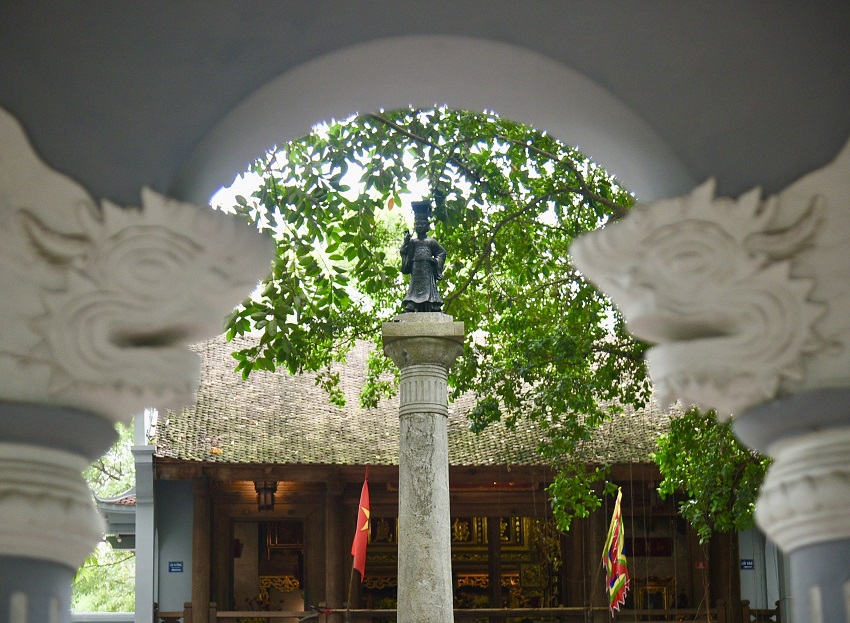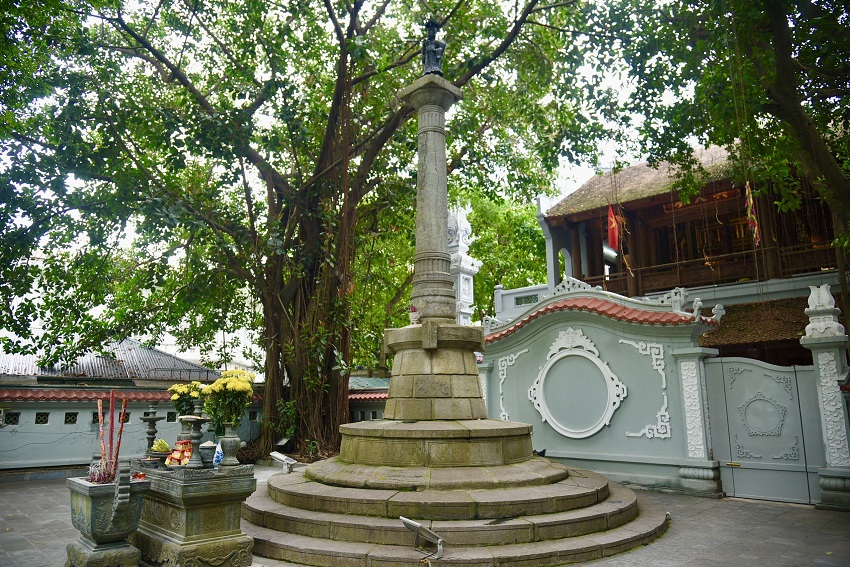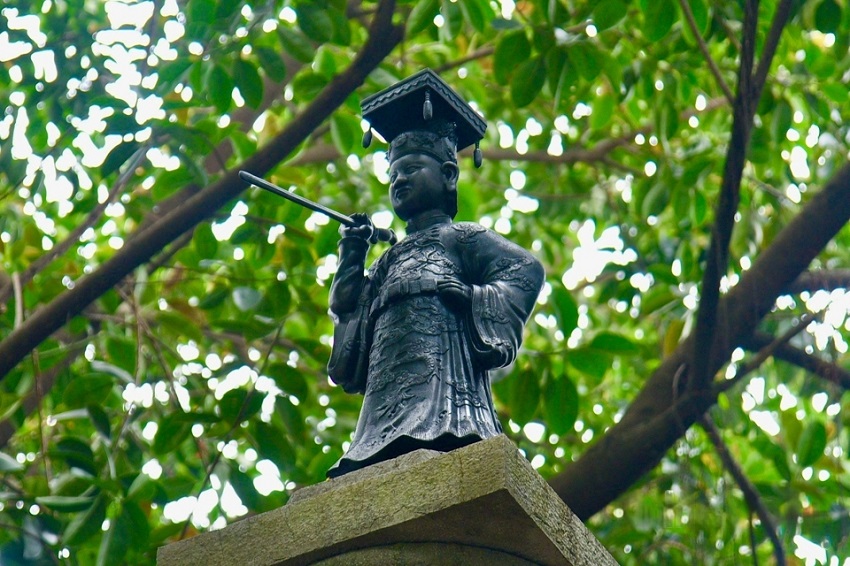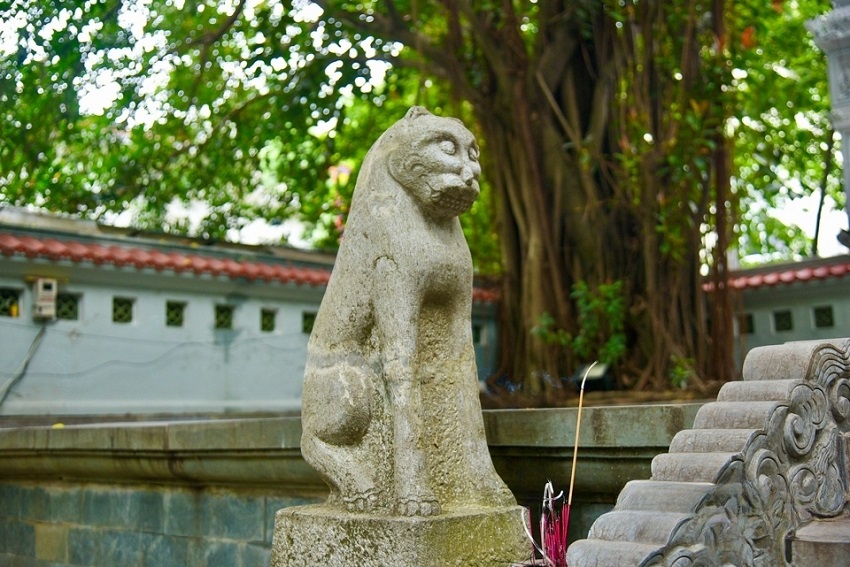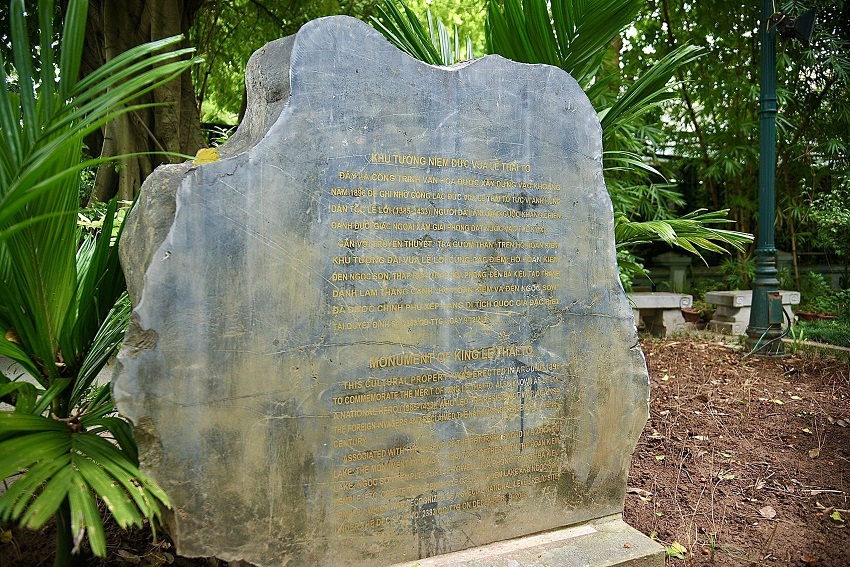Statue of King Le - the oldest bronze architecture in Hanoi
Associated with the restoration of Vietnam's independence, the bronze statue inside the little-known Nam Huong Communal House is impressive.
Le Loi (1384 - 1433), also known by his temple name of King Le Thai To and his pre-imperial title of Binh Dinh Vuong, is one of the most prominent figures and greatest heroes in Vietnamese history.
In 1418, Le Loi and his men rose up against Chinese Ming invaders. Nine years later, his resistance movement successfully drove the Ming armies out of Vietnam and restored Vietnamese independence.
The victory was closely linked to the legend of Hoan Kiem Lake or Sword Lake. Le Loi was said to have been lent a magic sword of miraculous power by the Dragon King to fight the enemy. After defeating the foreign invaders, he returned the precious sword to God Kim Quy (Golden Turtle) right at the symbolic lake of Hanoi and then changed its name from Ta Vong Lake to Sword Lake.
Less known than the famous statue of King Ly Thai To, the statue of King Le Thai To is located in the west of Sword Lake, in front of the 100-year-old Nam Huong Communal House.
Built in the late 19th century, this tiny statue is considered one of the oldest preserved monuments in Hanoi.
The statue of King Le Thai To (King Le Statue) is located in an architectural complex at No.16 Le Thai To Street, Hang Trong Ward, Hoan Kiem District, Hanoi.
The architectural complex was built in 1894 by Hoang Cao Khai, a viceroy of Tonkin, the northernmost of the three parts of Vietnam under French colonial rule in the 19th century. The construction is said to be built in commemoration of King Le Thai To, associated with the legend of returning the treasure sword to the god Golden Turtle.
The monument includes three main constructions: the Nam Huong Communal House; the Phuong Dinh or "a square house" for offering incense; and the King Le statue. All the elements of the monument area fit harmoniously into the scenery of Sword Lake, which is both solemn and poetic.
Today, the King Le Thai To Statue is both a work that expresses the nation's fine cultural traditions and a destination that visitors should not miss when exploring Hoan Kiem Lake.
| Behind it, on top of a high stone pillar, is the statue of King Le. |
| The pedestal of the monument is 0.8 meters high and is accessed by a three-step stone staircase. |
| The king stands in a majestic posture holding a sword overlooking Hoan Kiem Lake. |
| The sitting tiger stone statue is meant to protect the King. |
| This is also one of the typical works celebrating the 1,000-year anniversary of Thang Long - Hanoi in 2010. |

